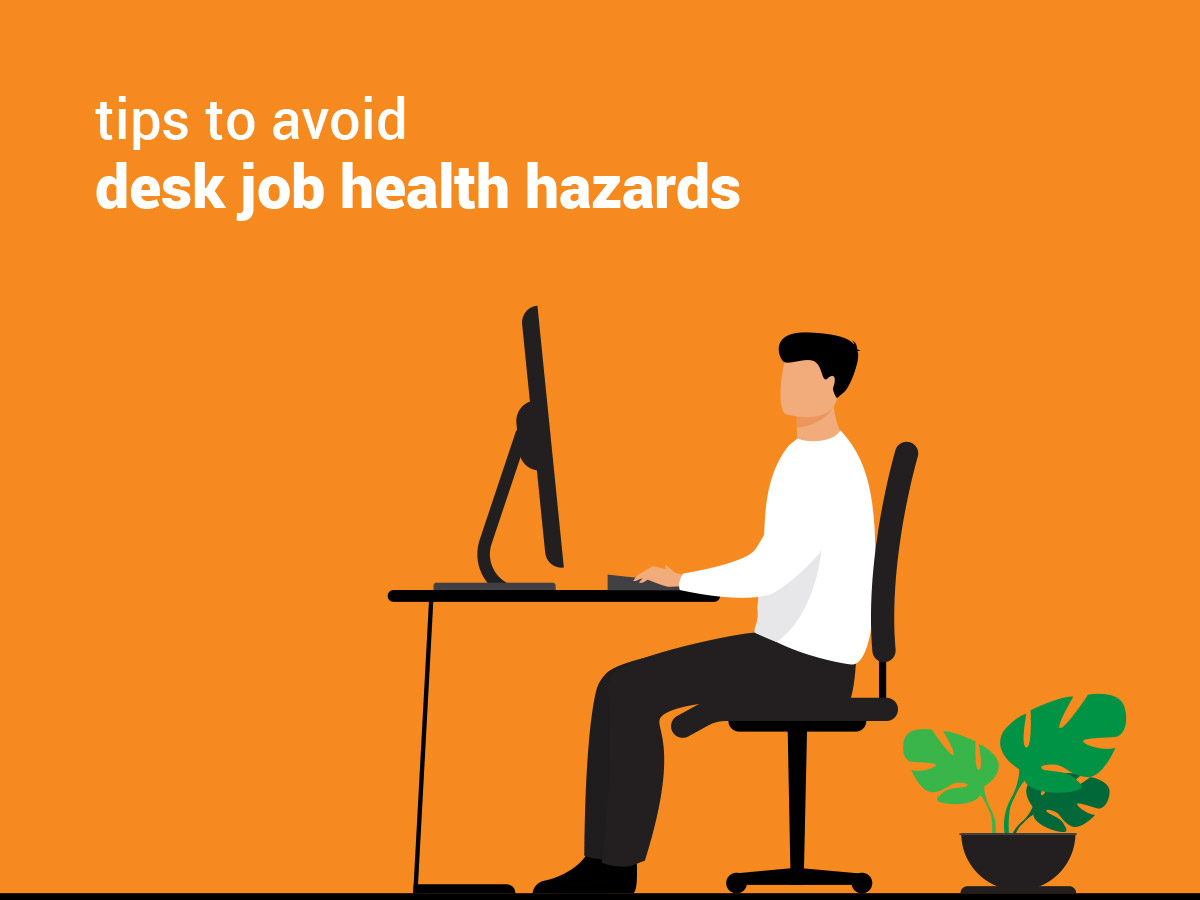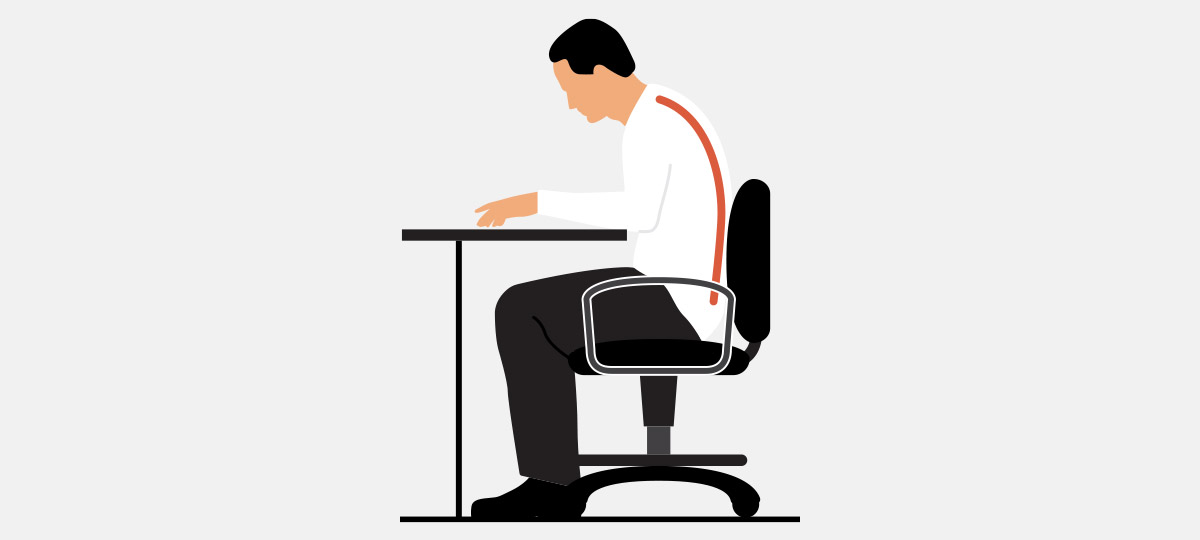
When the list of the most dangerous jobs is created, a desk job isn’t seen claiming a spot on the list at first glance. After all, how can a job, which requires a person to sit at a table and work, be harmful to anyone? But in reality, employees whose job designation requires them to work in front of a computer or sit for long hours are prone to Work-related musculoskeletal disorders or WRMSD for short. WRMSD is defined as the injuries or disorders that occur in tissues or muscles or nerves and is a result of straining of these body parts while working. The most common body parts which are prone to WRMSD are wrist, hands, neck, elbows and shoulders.
While WRMSD covers muscular disorders, there are various other problems that can arise due to longer hours at a desk. These disorders vary from person to person, and are usually related to the type of desk job that an employee is exposed to. Headache and strain on eyes are usually found in people who are regularly exposed to screen, while back pain is usually the result of longer hours on a chair. Obesity is a common, but avoidable disorder, which can be managed if necessary precautions are taken.
The human body is designed to be active. While rest is necessary, it is not meant to be confined to a particular position. Extensive inactivity leads to body reacting differently, which in turn leads to disorders. Electrical activity to lower body as well as the calorie burning rate decreases. This kind of lifestyle is known as a sedentary lifestyle.
In order to avoid health issues that may arise from this lifestyle, exercises are recommended. These differ from person to person, and depend on the type of desk job that an employee is doing. As such, certain exercises are beneficial for any desk job employee, while others can aid an employee depending on their job designation.

The most common health issue that arises in a desk job employee is the lower back pain. This is mainly due to the fact that the employee is sitting in a sedentary position for a prolonged period of time throughout the day, which increases the stress on the lower back area. Either slouching, or even curving your back while sitting straight can lead to unnecessary stress, leading to lower back pain. This can be avoided by a simple task – stand up. Standing up increases the blood flow to the lower body area, and relieves the lower back of the strain it carries while you are sitting at your place. Walk around to complete small tasks such as putting things back in their place or meeting a colleague to inform them something.

Another health issue that can be traced back to sitting is obesity. This health issue arises over a longer period of time. The chief reason behind this is straightforward – sitting in one place. Lack of movement leads to decrease in burning of calories, which will then accumulate as excess fat and be stored in the body. This leads to the medical condition known as obesity, where the fat stored accumulates in the body. This also leads to other health conditions such as high level of cholesterol in blood, which increases the chances of a heart attack. This health issue can be easily controlled by maintaining a healthy diet and regularly walking to burn calories. Small snacks in-between meals need to be avoided to decrease the calorie intake of a person.
The Carpel Tunnel Syndrome (or the CTS) is a common musculoskeletal disorder that is common in desk job employees who work at computers. CTS is a WRMSD which is developed due to pressure applied on the median nerve, which is the main nerve connecting the hand to the nervous system. When the hand is kept in a certain position, due to which pressure is applied on the median nerve, for longer period of time, it leads to effects like numbness, weakness and tingling in the hand. Muscles in the hand or fingers can also be damaged due to this. In order to prevent this, the posture of hands while typing or working with the mouse should be changed, and hands should hover over the level of your wrists. This eases the pressure on the median nerve, which is present on the lower side of your wrist. If the disorder has reached a higher stage, medical help should be sought at a hospital.
While posture coupled with a sedentary lifestyle can lead to musculoskeletal health issues, objects around an employee can also be the cause of illness at a desk job. Electronics used for the job are a prime example of this. The screens of electronics are always emitting harmful blue light. This is nothing but the light from the screen, whose wavelength is that of the blue colour. While the human eye can perceive various colours, it is not good at stopping the blue light. Thus they penetrate the retina, and since they are of high energy, can easily damage the light sensitive cells. In order to prevent this, it is advisable to take breaks while watching a screen or working at a computer.
Apart from this, working at a computer for longer periods also leads to strain on eye as the retina is being exposed to light for longer durations. This leads to watery or dry eyes, and ultimately headaches.
Overall, a few remedies can solve most of the health issues that may arise while working at a desk job. Keeping a correct posture while working can help an employee avoid various WRMSD. A walk at regular intervals can aide in reducing stress levels, while also allowing the employee to take a break from the screen and the harmful blue lights. It can also help in maintaining your cholesterol levels. Apart from this, short workouts like desk push-ups or calf raises can help maintain the blood flow to lower body, thus relieving any strain that may have built up.
With work-from-home becoming a norm since the pandemic, it is important to realise the effects that a sedentary lifestyle will have on the human body. Short work-outs and other forms of home exercises should be practiced in order to keep the body healthy.




